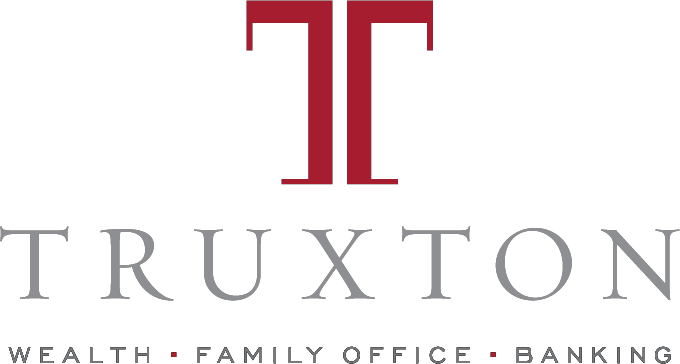Facing Some Difficult Facts
The S&P 500 declined 3% in September due primarily to general acknowledgement that the Federal Reserve “the Fed” meant what it has been saying all along: rates will remain at (or slightly above) current levels for some time. The Fed has hiked interest rates from 0 to 5.5% in about 18 months to contain an unacceptably high inflation rate. While inflation has declined, we would characterize the progress as stubborn. Employment remains very strong with strong wage growth, a low rate of unemployment, and a growing labor force. The S&P 500 index has returned 12% year-to-date primarily on the strength of a small group of large cap technology stocks tied to artificial intelligence following the launch of ChatGPT. The rest of the market is sending mixed signals based on varying assessments of what is to come with rising energy prices, concerns about systemic risks from China’s debts and anticipation of the delayed fallout of higher interest rates.
Fed policy operates with a significant lag and it is not a precision instrument. Higher rates will affect capital spending, consumer spending and asset values. Just because it hasn’t yet does not mean it won’t. The Fed’s September meeting did not include a rate hike, but it did include comments and forecasts that the Fed will not cut rates any time soon causing market participants to recalibrate dovish expectations. Officially, Fed policy is “data dependent”, but governors do make forecasts that form a consensus expectation regarding future decisions called the “dot plot”. In September, this consensus saw one more rate hike and a significantly longer period before the first rate cut: late 2024. These forecasts assume higher growth rates for the economy and lower unemployment versus prior estimates. In response to the new consensus view, yields on longer maturity treasuries rose significantly, following a period in which longer term rates were significantly lower than short-term. The condition where short-term interest rates are higher than long-term interest rates is known as an inverted yield curve, which generally is seen as a signal of looming recession forcing the Fed to cut short-term rates. In this case, long-term rates are rising to meet the short-term rates because of the Fed’s signals and the still healthy outlook for growth. The “Fed Put”, which was enabled by persistently low inflation, seems to be a thing of the past or at least on hold for now.
When there are conflicting signals, simple frameworks tend to help me make sense of things; for instance, we know water flows downhill. One of the simplest frameworks for market valuations is called the “Fed Model” or the “Federal Reserve Model”. It isn’t really a model at all and the Fed does not officially endorse it, but market participants have been aware of it for years and it has received more formal attention since the 1990’s.
The “Fed Model” relates the yield on the 10-year treasury to the earnings yield on the S&P 500, which is the inverse of the price to earnings multiple: earnings/price. The old saw goes that whichever is higher is a good buy and vice versa. While there have been extended periods during which the 10-year Treasury yield was greater than the earnings yield on the S&P 500, it is more often a matter of degrees by which the earnings yield is greater than the treasury yield.

The “Fed Model” is showing something that we haven’t seen in a long time; the two are approaching parity. The search for a “rule” to manage money is often tested and rarely successful. The Fed Model framework is based on a simple return equivalence for very uncertain variables. Earnings tend to grow over time and small corrections (or increases) in equity prices can lead to large increases (or decreases) in the earnings yield. In our opinion, interest rates are as difficult to predict as earnings and stock prices. Portfolio responses to every market movement would result in unnecessary taxes and lost opportunity. While we don’t recommend using the Fed Model as a signal to make dramatic changes to asset allocation, it is informative when trying to determine the relative attractiveness of the investment opportunity set. Investing is about opportunity cost, which is the return that can be earned on other investments, adjusted for risk. On this basis, bonds are looking better than they have since 2007.
Investment returns are measured as a weighted average of the components of the portfolio. If a portfolio is 50% equities and 50% bonds and the two classes return 12% and 2% respectively the return is: (50%*12%) + (50%* 2%) = 6%+1% = 7%. That was basically the math for the 10 years ending December 31, 2022. Going forward, higher yields on bonds (5.5%) and normalized equity returns (8%) should produce a similar outcome in a different way: (50%*8%) + (50%*5.5%) = 4% + 2.75% = 6.75%.
We are going through a period of displacement in which the value of existing bonds and equity prices have fallen. The adjustment is painful and frustrating, but we believe that once the Fed succeeds in containing inflation (with some extra time to be certain that it is contained) markets will return to an environment where risk is rewarded with additional return albeit likely less than we have seen over the prior 10 years. We also believe that investment grade bonds will continue to be the most economical and time-tested means of managing portfolio risk. In the meantime, we are mindful of unique risks in the equity markets created by high valuations, heavy indebtedness and operational issues. We are also looking for opportunities for new investments to upgrade equity holdings while prices are lower for many good companies. We are allowing bonds to mature and reinvesting the maturities at prevailing rates, which should improve portfolio yield over time.
The September decline in stocks, which has followed through to early October is primarily a recognition that the “soft landing” scenario that drove market performance through July 31 is going to be difficult because the Fed is trying to restore 2% inflation. The most recent reading by the Fed’s preferred measure is 3.9% with higher energy prices and strong employment providing inflationary pressures. Will what the Fed has already done (plus one more hike) slow the economy to the point at which no further action is necessary? Or will persistent inflation require additional hikes? We believe that the Fed’s current path will slow inflation, but rates will likely need to stay “higher for longer” which will likely slow economic growth considerably with potential for a mild recession.
We believe that severe equity market declines usually accompany a credit crisis of some sort. We don’t see warning signals yet, but we are watching the environment for stresses following such a large and rapid increase in interest rates. For now, we are focused on good assets for all seasons, managing portfolio risk, making cash available where needed and harvesting tax losses where available to limit tax liabilities.

